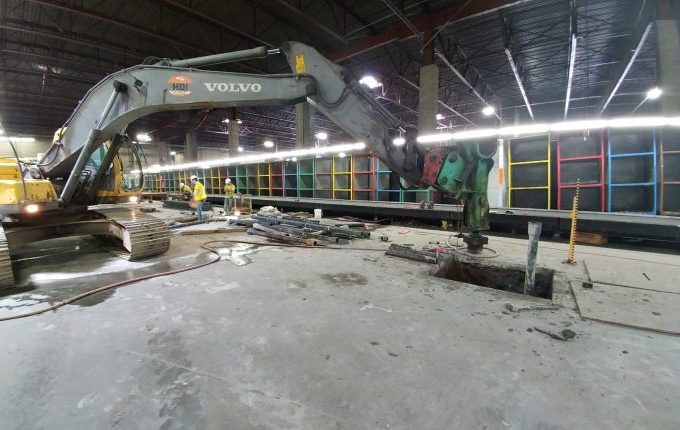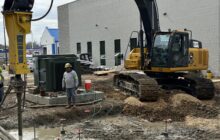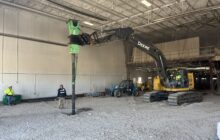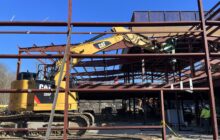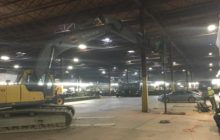Ductile Iron Piles Provide Foundation Support In Low-Overhead Conditions
Project Description:
The project involved construction of a new mezzanine expansion within an existing shipping distribution facility. Overhead clearances were limited to about 20 feet. The addition of 13 new column locations required saw-cutting of existing slabs prior to foundation construction. Column loads required support for compression loads of up to 400 kips along with both tension and lateral loads.
Geotechnical Conditions:
Soil conditions consisted of medium dense to dense granular fill to depths of 3 to 9 feet followed by very soft to stiff clay, silt and organic silt extending between 16 and 27 feet below grade. The cohesive layer was underlain by loose sand and silty sand followed by dense glacial till. Rock was encountered at depths of about 26 feet up to 40 feet. Groundwater was measured at 4 to 9 feet below grade.
Project Challenges:
Provide cost-effective and rapid foundation support for new interior columns in low-overhead conditions while working around active distribution activities.
Advantages
- Rapid installation compared with micropiles
- Substantial cost-savings compared with micropiles
- Low overhead clearance for interior construction
- Low vibrations
Design and Construction Solution:
Project documents specified 7-inch diameter, rock-socketed micropiles with a capacity of 50 tons (compression) and 15 tons (tension) be installed for new foundation support. Helical piles and Ductile Iron Piles designed to achieve comparable working capacities were provided as alternatives on the project drawings.
Helical Drilling, Inc. offered the project team a Ductile Iron Pile (DIP) solution to deliver a 1:1 replacement of the specified micropiles while significantly reducing cost and installation duration. The DIP design consisted of a Series 118/7.5 pile (118 mm outer diameter with 7.5 mm wall thickness) installed with an oversized 220 mm conical cap to allow grouting of the pile interior and the annular space along the pile exterior during driving. The piles were designed to terminate by achieving “set” on rock while also developing frictional capacity to resist tension loads through a grout-to-ground bond zone. A 1-inch diameter Grade 75 threadbar was installed full-length in the center of the grouted piles to resist the tension loads.
Full-scale load testing was performed on non-production piles by monitoring both compression and reaction (tension) piles during testing. The compression load test performed on the grouted 8-inch diameter grouted pile showed less than 0.1 inches of movement at 50 tons (100%) and about 0.2 inches of movement at 100 tons (200%). Monitoring of the DIP tension reactions showed about 0.1 inches of movement at the 15 ton design load and 0.23 inches at 25 tons. Results of testing confirmed the acceptance of the Ductile Iron Pile solution to more than meet the specified design capacities.
A total of 79 production piles with average lengths of about 27 feet were installed on the project. Due to low overhead conditions, piles were installed from within the pile cap excavations using cut pile sections and driven couplers to splice the piles. All load testing and production installations were completed in only 10 working days. The use of Ductile Iron Piles provided cost-savings as well as considerable schedule savings. In addition, the grouted Ductile Iron Piles provided a substantially cleaner option with virtually no spoils compared with a micropile system.
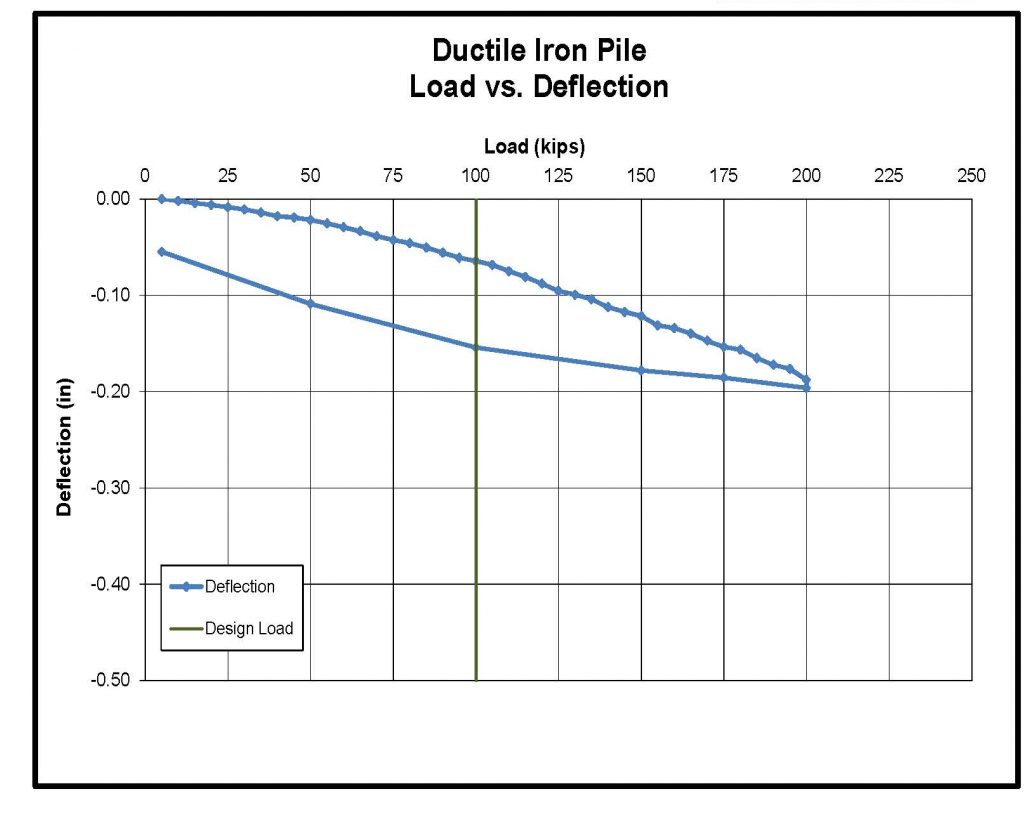
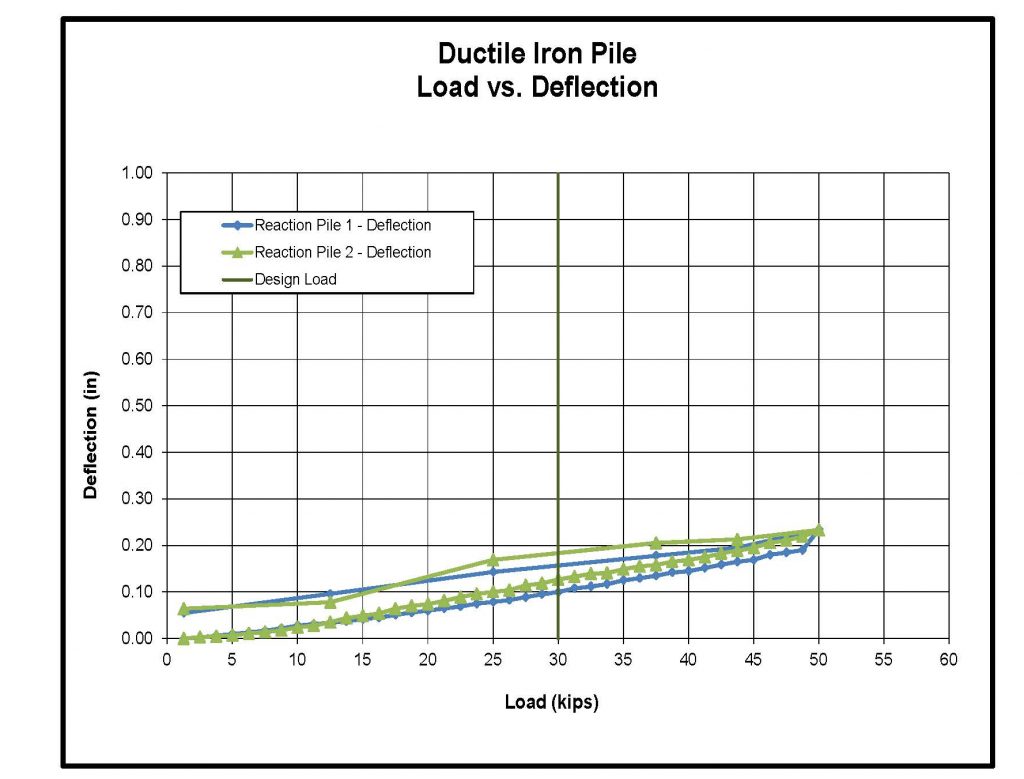
Project Team Members
DIP Design/Build Partner: Helical Drilling, Inc.
Geotechnical Engineer: GZA GeoEnvironmental, Inc.
General Contractor: CVMNEXT Construction
Structural Engineer: CVM Engineers

